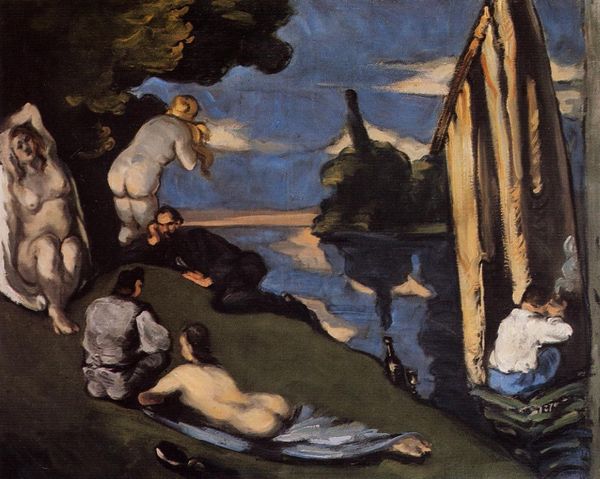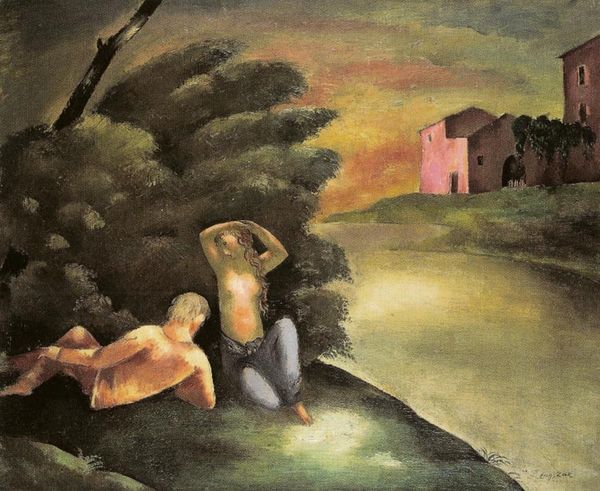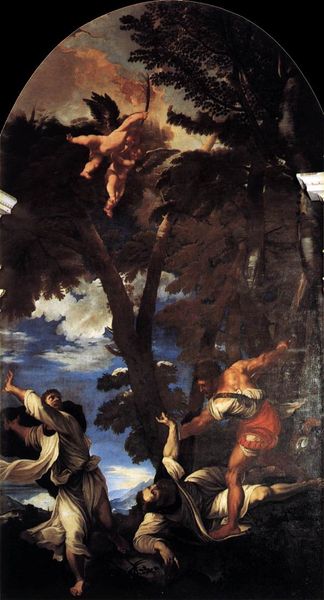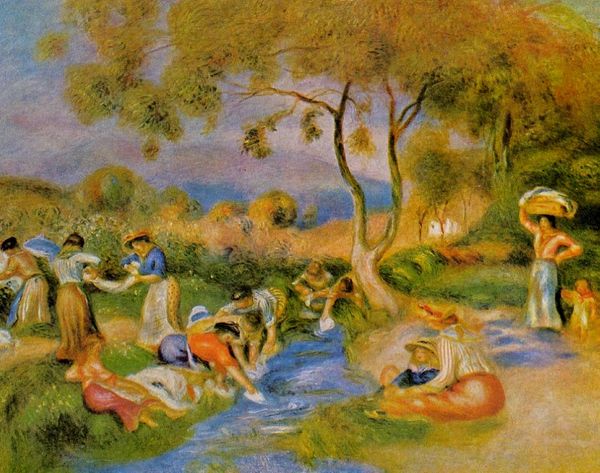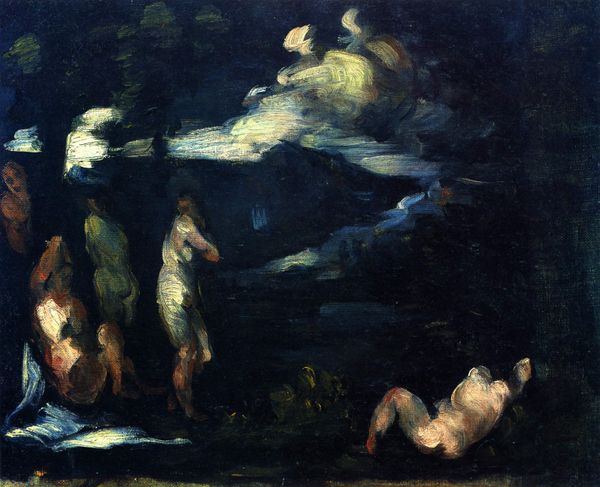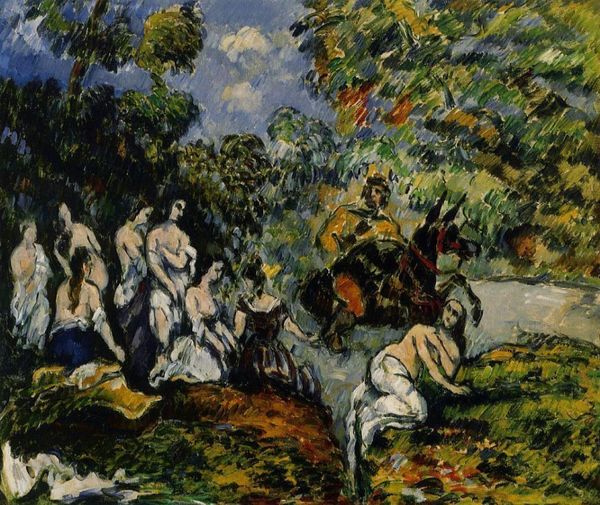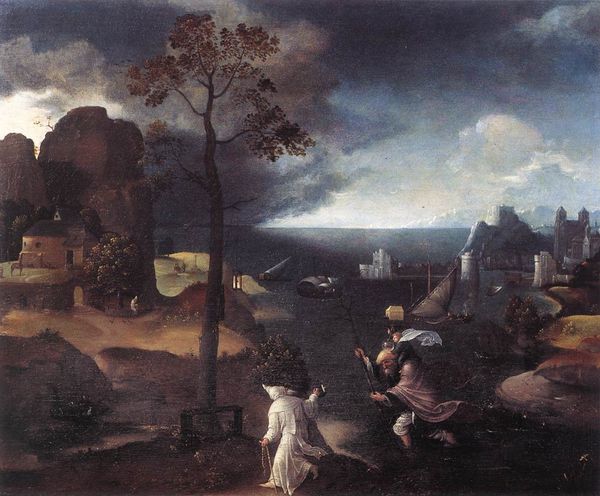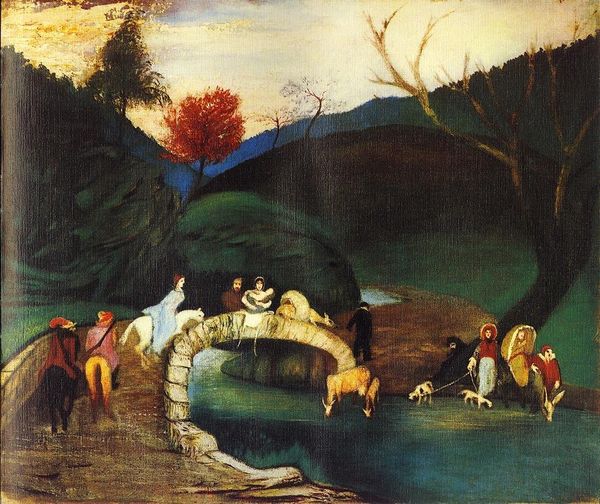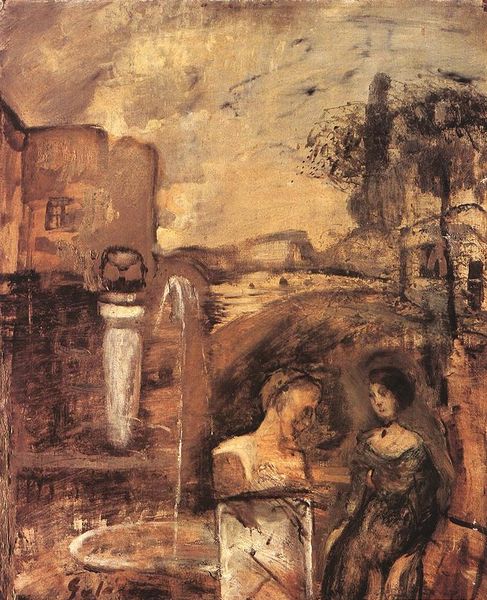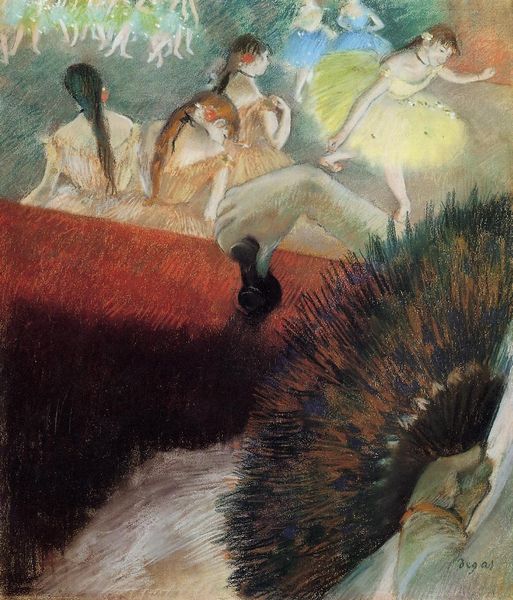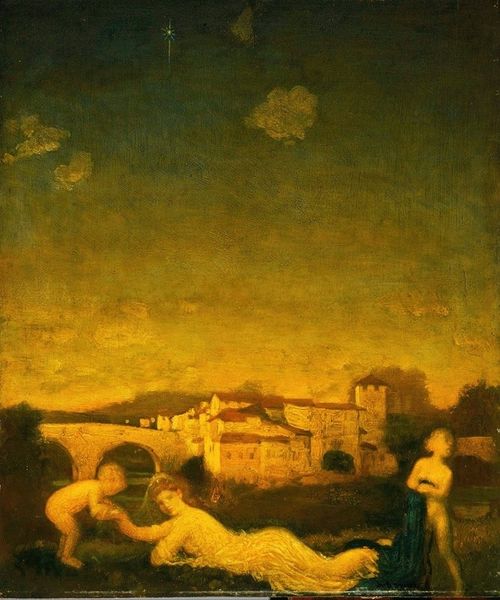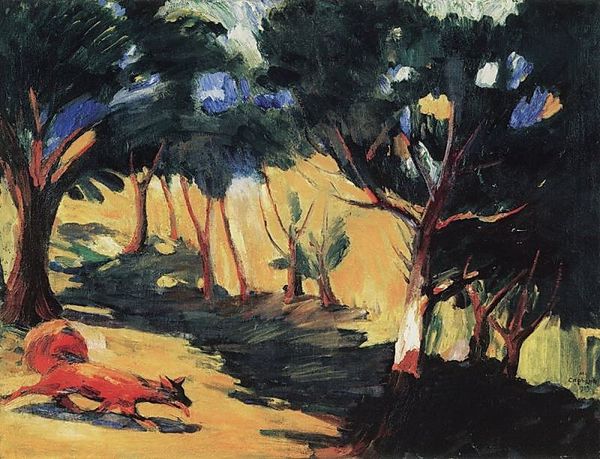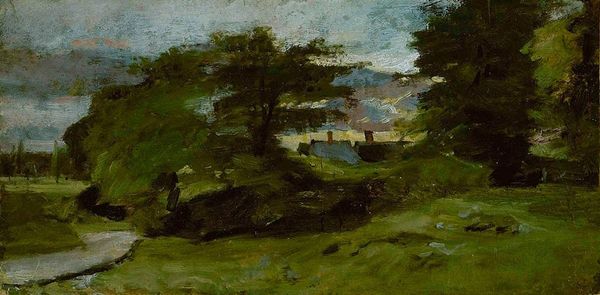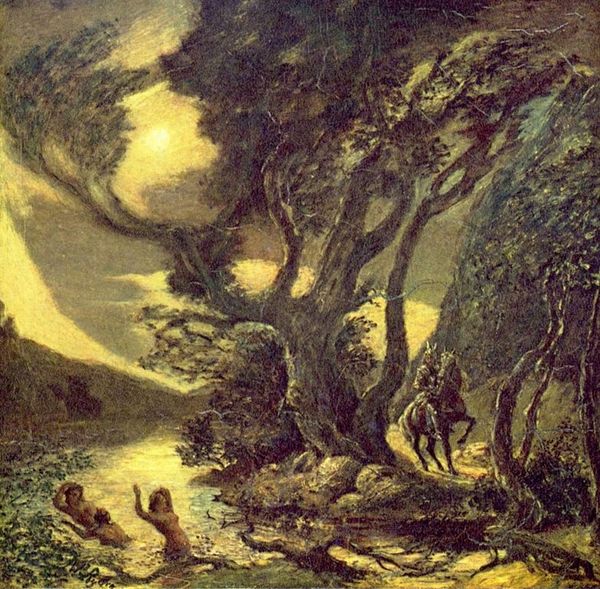
Copyright: Public domain
Paul Cézanne painted "The Robbers and the Donkey" with oil on canvas. At first glance, the eye is drawn into a theatrical scene, with figures caught in stark contrasts of light and shadow. Cézanne's brushstrokes are deliberate, building a world that feels both tangible and dreamlike. The composition reveals a dynamic arrangement. Notice how the cluster of robbers to the left is balanced by the solitary figures and the looming tree on the right. The donkey acts as a fulcrum, grounding the more chaotic elements. Cézanne employs color not just descriptively, but structurally. The warm yellows and oranges define the open spaces, pushing forward, while the blues and greens of the background recede. Cézanne subverts traditional modes of representation by fracturing the pictorial space. The scene is not rendered illusionistically but constructed through a series of planes and angles. This approach is less about telling a clear narrative, and more about exploring how we perceive form and space. Cézanne challenges our conventional understanding, inviting us to reconsider the very act of seeing.
Comments
No comments
Be the first to comment and join the conversation on the ultimate creative platform.
